Where to live, how much does it cost, and what should I expect when moving to Silicon Valley?
By Nick Young
Silicon Valley is a collection of cities, the largest and likely most infamous being San Jose, in Northern California which is known around the world to be a centre for innovation and technology developments. With an established reputation as one of the most desirable places in the world to live and an absolutely booming economy which offers high paying jobs for the best and brightest in their industries, combined with being one of the most expensive areas for real estate, relocating to Silicon Valley can be an excellent choice for an international move. Just the thought of moving to Silicon Valley is enough to fill one’s mind with joy and excitement, while also providing a healthy dose of worry about how one will be able to cope with the issues related to living there.
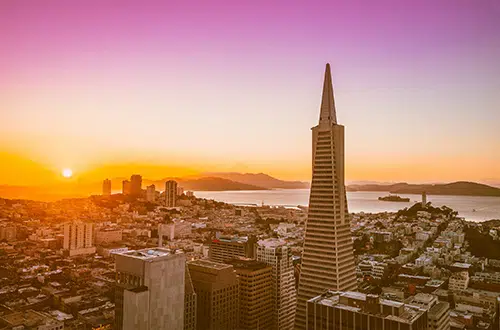
The key to making it as a new arrival in Silicon Valley is to know what lies ahead as an individual or family in terms of where to live, how to best adjust to the lifestyle there, and what challenges you are likely to face when relocating to Silicon Valley.
I’ve written several articles providing tips for international relocation and moving, and as someone born and raised in Silicon Valley, I can offer you an overview of the area and some helpful advice on how to get settled in quickly and happily.
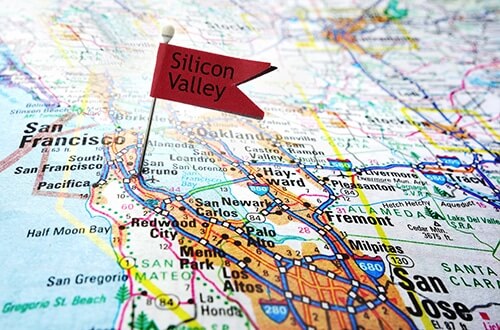
Where is Silicon Valley and what are the different regions?
To get to know the area before moving to Silicon Valley, it’s important to know the different areas that comprise this beautiful region of California. Historically speaking, Silicon Valley began in and was concentrated around Palo Alto, the city where Stanford University and its technology departments were located. The area around the university became known as a hotspot for technology development, particularly related to computing with silicon microchips, and hence the term “Silicon Valley” was coined.
Over the years the area known as Silicon Valley has expanded, and can now be considered to be everywhere between San Jose and San Francisco, with the borders going further and further every year. This 48 mile stretch from these two cities is where you’ll find most of the companies that operate in the sphere of what is known as Silicon Valley.
On a larger scale, the same region is called The Bay Area due to being located on or near San Francisco Bay. Many people now refer to the different regions according to where they are located relative to the actual bay, for example, everything north of the Golden Gate Bridge is “The North Bay”, around San Jose it’s called “The South Bay”, and the large area East of San Francisco is “The East Bay.”
Wanting to be a bit unique from the rest, the area between San Jose and San Francisco is typically called “The Mid-Peninsula” and, of course, San Francisco stands on its own without the need for any other designation, although it is broken into a number of distinct neighbourhoods each with their own styles and character. A little tip for you as a new arrival relocating to Silicon Valley, locals often call San Francisco “The City” and only tourists call it “Frisco”, a term that draws the ire of native San Franciscans. If you want to make friends easily, join locals in making fun of the people who call it that.
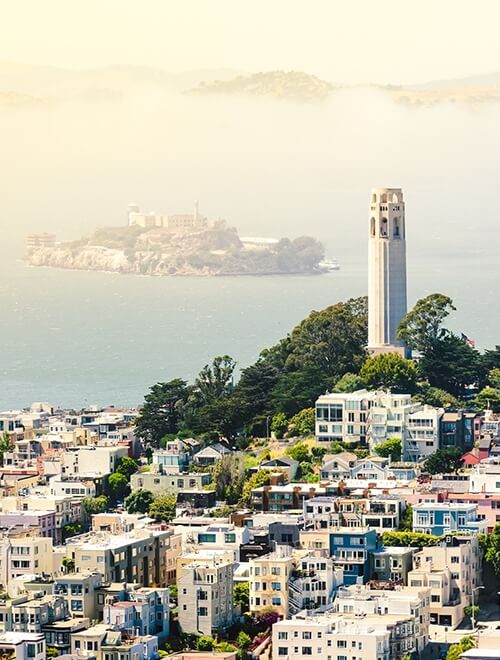
Where should I move to in Silicon Valley or the Bay Area?
Each of the areas described above is a collection of cities or towns, including big cities such as Oakland with a population of 425,000 and San Jose with over 1 million people, all the way down to the tiny town of Colma with only 1500 people. What you’ll find most are towns with a population between 30,000 people and 100,000 people.
Seeing that there is a huge diversity of locations one can choose to live thanks to the natural geographic and historical variety that the area provides, one can reside in a seaside surf town, a hillside village near a lush redwood tree forest, a peaceful suburban family community, or right in the heart of the bustling metropolis of San Francisco. For most people relocating to Silicon Valley, the two most important factors when choosing where to live are commute time and real estate price, which we’ll get into a bit more below.
While one is searching for the right property in Silicon Valley, it can be advised to arrange temporary accommodation locally with the help of an experienced and well-connected relocation company. The Bay Area real estate market is competitive and expensive, so taking your time to explore the different areas and find the right place to live is incredibly important for a successful long term transition.
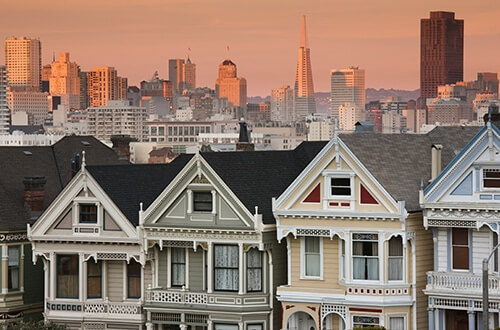
How much does it cost to buy or rent a house in the Bay Area?
If you want to move to the Silicon Valley area, an important factor is a budget when it comes to finding appropriate accommodation. This can have a huge effect on the cost of living in Silicon Valley. It’s a well-known fact that renting or buying a house in Silicon Valley comes with an astronomical price tag relative to pretty much anywhere in the world. The average sale price of a single-family home in the Bay Area at the time of writing this article (August 2019) was $563 per square foot (or about $6200 per square metre) and even more for buying a condominium. The price can go up a whole lot more when going to the more exclusive towns in the Bay Area, with mortgages costing on average upwards of $16,000 per month, or the most pricey neighbourhoods in San Francisco where renting a 1 bedroom apartment can cost on average nearly $4000 per month.
Fortunately, not every area is so extreme in its costs, although you’ll need to know where to look to match your budget and housing preference. If you are looking for a suburban family experience if moving to Silicon Valley with family, there is an abundance of nice medium-sized cities to choose from throughout the Bay Area. Take a look at Campbell, Redwood City, or Walnut Creek as examples of popular places for families to live.
For singles or couples looking for the excitement of a metropolitan lifestyle, then living in San Francisco or San Jose is the way to go. For those that don’t want to be in a city but still want dynamic locations with a lot of young people and plenty to do, then Palo Alto, Berkeley, and Los Gatos are all great choices.
Due to the sheer number and variety of places one can live, using the home search services of a relocation consultant is recommended, as they’ll be able to connect you with real estate agents, advise you on what areas to target for your home search, and will always provide impartial advice.
Cost of living in Silicon Valley
While the cost of housing in Silicon Valley can be steep, often named one of the most expensive places in the US when it comes to buying property, the cost of living in Silicon Valley is not nearly so jaw-dropping. When compared to other major cities around the world, the cost of living in Silicon Valley, i.e. buying groceries, visiting restaurants, and enjoying local entertainment, is fairly affordable. Groceries in London and New York are typically around 25% more expensive than in Silicon Valley, with restaurant prices also higher in these large cities.
To help save on money when living in Silicon Valley, there are plenty of great local tips. For example, knowing the best grocery stores to frequent will save time and money, so you should compare prices on your favourite products in large chain supermarkets, independently owned grocery stores, and farmers’ markets and shops.
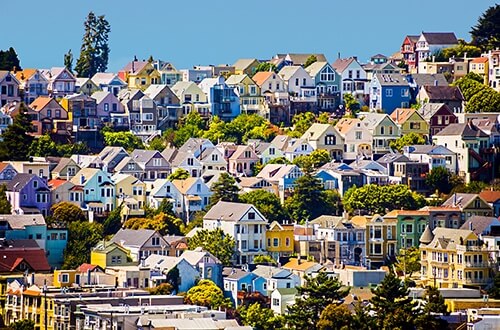
Commuting in Silicon Valley
Trying to get around America without a car is a bit like trying to walk without having legs. So owning a car while living in the Bay Area is essential. The average amount of time Bay Area residents spend in the car is 60 minutes per day, and that number is increasingly going up each year as more people relocate here.
There are a few other options for distance commuting in and around the Silicon Valley, including BART trains, which mainly connect the East Bay and San Francisco, or the Caltrain which goes from San Jose through the Mid-Peninsula to San Francisco. The fortunate few coming from the coastal North Bay into San Francisco can take a ferry with the Blue & Gold Fleet across the Bay. Most everyone else will need to use a car.
For foreign nationals that relocate to the USA and would like to drive there, over the first 90 days you will be able to use your home country driver’s licence when accompanied by an international driver’s permit (applicable for residents in every state except Georgia). This permit must be acquired in your home country, and not in the USA.
Following these 90 days, you’ll need to get a driver’s licence from your state of residence in the USA. This can be a somewhat complicated process in terms of bureaucracy and knowing what steps to take. If you’d like assistance in arranging this, you can use the settling-in services offered by a relocation company.
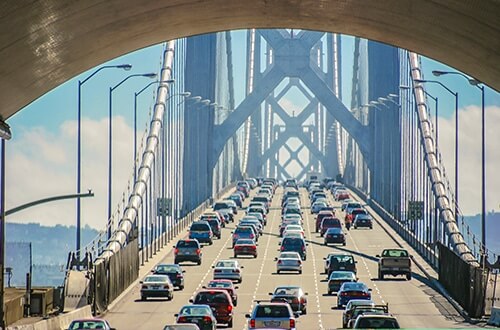
What activities can I expect to enjoy in the Bay Area?
Silicon Valley and the Bay Area, in general, is a wonderland when it comes to outdoor activities and cultural offerings to enjoy.
For sports lovers, relocating to Silicon Valley can be the ideal move to maximise this hobby. The weather is spectacular year round—almost never getting cold enough to snow in winter and rarely rising to uncomfortably high temperatures in summer. This gives ample time to hike the many nearby forested nature preserves, surf the waves along the long coastline, cycle the foothills of Marin County (the birthplace of mountain biking), or find a game of tennis, basketball, or soccer in the countless number of local public parks around the area.
The Bay Area is a huge melting pot of international people, meaning there’s a nearly unlimited diversity of restaurants, cultural events, and festivals to discover. This makes it an attractive place for a diverse range of people, and moving with family can open up a wide range of entertainment opportunities for the whole family. San Francisco is of course the ultimate destination for a taste of American and international culture and fascinating old neighbourhoods to explore, offering something that appeals to everyone, from dot-com billionaires to hippy artists to young families.
Whether visiting famous galleries and exhibition halls like The Museum of Modern Art and the de Young Fine Arts Museum, or walking through the narrow and noisy streets of Chinatown or the upbeat Italian neighbourhood of North Beach, you could spend an infinite amount of time finding unique new spots and activities to fall in love with in San Francisco.
Beyond “The City”, a visit to Berkeley will provide you with a taste of its famous university counter-culture and a tremendous amount of ethnic restaurants to enjoy. The old seaside towns across the Golden Gate Bridge such as Sausalito and Tiburon provide elegance, beauty, and fresh sea air to those wanting to get in touch with the Pacific Ocean. In the Mid-Peninsula, downtown Palo Alto offers sophisticated shopping and gourmet dining as the meeting point of the power and wealth that is Silicon Valley while also offering the opportunity to explore the naturally beautiful campus of Stanford University, often referred to as “The Farm” due to its surprisingly agricultural setting.
In the South Bay, Los Gatos and the shopping and entertainment centre Santana Row offer outstanding restaurants and nightlife, while during the day one can go hiking or mountain biking in the Santa Cruz Mountains followed by a dip in the Pacific Ocean at the seaside town of Capitola.
A great way to get to know a specific area or multiple areas is through an orientation tour led by a local relocation consultant. You’ll share your interests with your consultant and ask to be connected to places that are important for you—such as shopping centres, different gyms, local parks, or the town centre—and the consultant will design a tour that lets you visit these places firsthand.
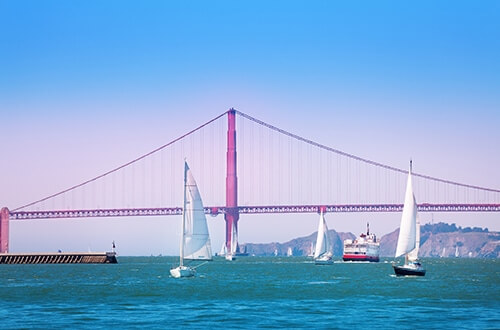
How do I make friends after moving to Silicon Valley?
Thanks to the large number of activities to participate in for pretty much any interest you may have, it’s quite easy to get connected with new friends in the Bay Area. Typically companies will make an effort to help new employees form friendships with their colleagues and of course schools offer parents a number of events to connect families together socially. Don’t underestimate these connections when considering how to expand social activities when moving to Silicon Valley.
For those that might want to look outside of these venues to make social connections, a number of meetup groups exist to find like-minded people, whether it be people looking to hike, play sports, or visit museums. Start by looking at Meetup Bay Area and what it offers to its over 70,000 members.

For families moving to Silicon Valley looking to get a proper start in their new location, you can read my article on 5 tips for families to prepare for an international relocation. Knowing how to prepare your kids for the transition and finding a school is incredibly important, so hopefully, this can help you out before and during the relocation.
As you can see, there is a lot to know and to discover about life in Silicon Valley and the Bay Area. Fortunately, it’s a pretty magical place that offers a lifestyle that most people fortunate enough to live there will fall in love with. With the right amount of preparation, some assistance from a top-level relocation company to get settled, and a proper idea of what to expect, it should be a fantastic move.
Are you headed to Silicon Valley from the United Kingdom? Find out how to move to the USA from the UK.
Nick Young is a writer and relocation expert from the Bay Area in California, now living in Prague, Czech Republic. He offers articles and relocation consultation and can be contacted through his company website www.relocationwriting.com.



